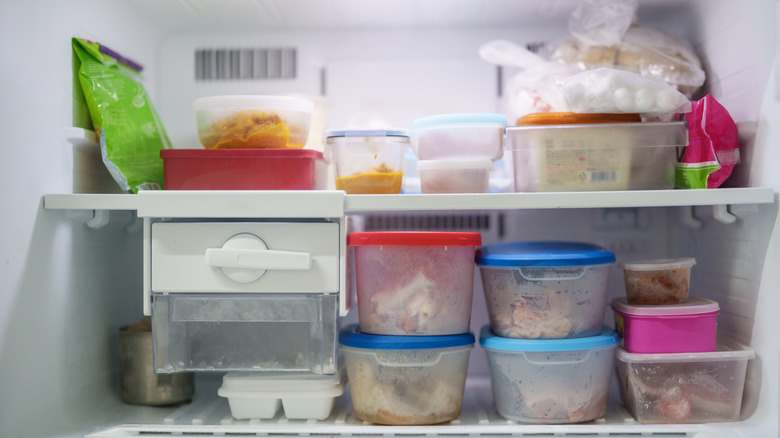The Southern Staple Ingredient You Should Be Storing In The Freezer, But Aren't
Grits seem like one of those foods you can toss in the pantry with your other shelf-stable staples, but depending on the kind you're buying, they might actually need some space in your freezer.
Grits take their variety from the type of corn they start from. Blue, red, white, yellow, and heirloom varieties each bring their own flavor to the bowl, and different styles work best in different dishes. A coarse yellow grit has a earthy corn flavor that works well in a serving of crawfish and grits, while a blue grit has a rich and nutty profile. Fine ground white grits, like the kind you'll want to consider upgrading to at Waffle House, are made to be shelf stable and stripped of nutrients. They can live in your cupboard without spoiling, but they're missing what makes grits worth eating in the first place.
Stone-ground or water-ground grits, on the other hand, still carry the brand and germ from the kernel. That's where the oils and vitamins live, and that's what you actually want in your breakfast bowl. The tradeoff is that those natural oils don't last forever. Leave stone-ground grits at room temperature for too long and the fats will eventually go rancid. Storing them in the fridge will buy you about three months, but the freezer doubles that shelf life, keeping them at their peak for closer to six.
Grits were never meant to be fast
When it comes to cooking stone-ground grits, patience might be the most important ingredient. That's not exactly what you want in a breakfast food, but if you want the proper texture you'll need to give them time. They should cook for at least an hour on the stove, and soaking them overnight helps to reduce the cook time. Instant grits became popular because they save so much time and can be zapped in the microwaved in a few minutes, but the flavor and texture are far from what grits originally were.
Stone-ground grits also require your attention while they cook. As the water evaporates, you have to keep them moving and maintain a watchful eye to add more liquid along the way. To me, this is the fun part where you get to be creative. Use stock if you want a rich, savory base. Add heavy cream or milk if you want something closer to a porridge, or stick with water if you want the corn flavor to shine. Be careful with the salt, though; grits absorb it quickly, and you want to avoid ruining all the time you've put in. One easy trick is to cook with salted butter, which keeps them from sticking to the bottom of the pot while adding just enough seasoning to round out the flavor.

